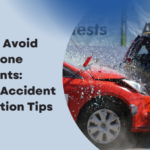There’s been a lot of talk in recent years about the future of self-driving cars, but that’s to this point been pretty limited as far as actually coming to fruition.
The hope, with the widespread implementation of self-driving cars, is that it would reduce collisions and deaths from some of the most common types of car accidents.
With that in mind, what’s the state of driverless technology right now?

Silicon Valley’s Still Working
Now that we’re in 2021, most tech gurus had predicted we’d already be fully immersed in the benefits of driverless cars, but that’s not the reality. Rather than that, there have been injuries and deaths, many billions of dollars spent, problems with technology and court battles.
Originally, Lyft and Uber were working on driverless technology, but it seems they’ve run out of money to keep going.
Lyft recently sold its autonomous vehicle unit to Woven Planet, a subsidiary of Toyota. Uber got rid of its unit to another competitor.
Three other startups have recently sold to companies with bigger budgets.
It’s estimated that the companies that stay in the game will spend up to $10 billion each before the technology becomes widespread, and that won’t be until the end of the decade based on current predictions, but maybe even longer.
This is surprising to many considering Elon Musk said in 2015 that fully functional self-driving vehicles were two years away. Now, we’re more than five years out from that prediction, and Tesla does have some autonomous capability but only on highways. There have also been several high-profile and deadly crashes, which Tesla has attributed to misuse of the technology rather than the technology itself.
Has Elon Musk Been Exaggerating All Along?
The director of Autopilot software recently told the California Department of Motor Vehicles that Elon Musk has been exaggerating the abilities of the company’s advanced driver assist system.
It was the most recent highlight of the gap between what Musk says in public about Autopilot and Autopilot’s actual abilities and functionality.
This disclosure was made after Tesla was facing heat from a crash in Texas where two men were killed. There was no one in the driver’s seat of the Tela.
A California DMV memo said that Tesla is at Level 2 right now. That means their technology is semi-automated and does require human supervision.
However, in January, during an earnings call, Musk said to investors that he was very confident a vehicle would be reliably driving itself this year.
Tesla would need Level 5 autonomy for cars to drive themselves without human supervision, and that’s highly unlikely this year.
The Technology Explained
There are a lot of terms that are used interchangeably, but they’re actually distinctive. For example, a fully autonomous car not requiring a human behind the wheel is still in the development phase.
However, many cars on the roadways right now are equipped with some level of semi-autonomous technology.
These are the safety and technology features that use sensors to determine what’s going on around a vehicle on a roadway. There are also features that allow vehicles to make decisions.
The NHTSA breaks down auto autonomy into six levels. Level 0 is no autonomy. Level 5 is fully autonomous with no driver required.
Along with Tesla, automation systems are currently on the road from Mercedes, GM, and Volvo. They’re Level 2. Level 2 indicates the vehicle controls steering and speed when it’s on a well-marked highway but with driver supervision.
A car such as a new Honda with adaptive cruise control, lane-keeping assistance and adaptive cruise control would fall into the category of Level 1.
Autopilot from Tesla has been increasingly confusing and troublesome in many ways.
Autopilot lets a vehicle operate itself within a lane, using cruise control and auto-steering. However, there are huge gaps as was touched on between what Musk has said and what it can do. Tesla is at Level 2 based on actual features and capabilities, as was touched on.
Autopilot does require that you keep your hands on the steering wheel and stay focused on the road ahead.
On the list of growing Autopilot crashes are many people who have fallen asleep behind the wheel or even been in the backseat.
So what does all this mean? It means that companies are working on autonomous technology, but a lot of smaller players have been pushed out. It also means that we’re still going to be waiting a while for those futuristic self-driving cars we might envision.








